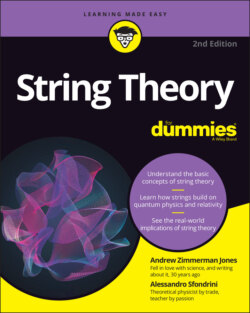Читать книгу String Theory For Dummies - Andrew Zimmerman Jones - Страница 38
Viewing matter classically: Chunks of stuff
ОглавлениеThe study of matter is one of the oldest physics disciplines, going back to the ancient philosophers who tried to understand what made up the objects around them. Even fairly recently, a physical understanding of matter was elusive as physicists debated the existence of atoms — tiny, indivisible chunks of matter that can’t be broken up any further.
One key physics principle is that matter can be neither created nor destroyed, but can only change from one form to another. This principle is known as the conservation of mass.
Though it can’t be created or destroyed, matter can be broken, which led to the question of whether there was a smallest chunk of matter, the atom, as the ancient Greeks had proposed — a question that, throughout the 1800s, seemed to point toward an affirmative answer.
As an understanding of thermodynamics — the study of heat and energy, which made things like the steam engine (and the Industrial Revolution) possible — grew, physicists began to realize that heat can be explained as the motion of tiny particles.
The atom had returned, though the findings of 20th-century quantum physics would reveal that it wasn’t indivisible, as everyone thought.
